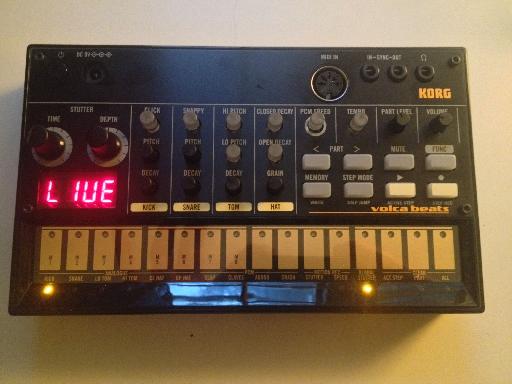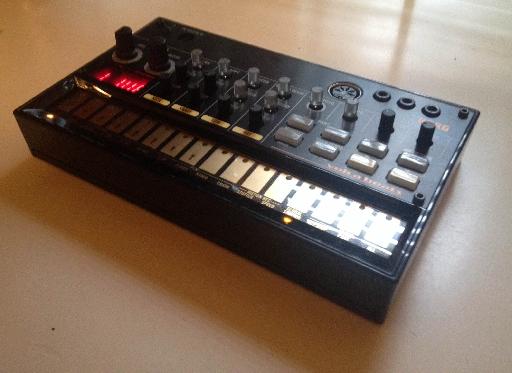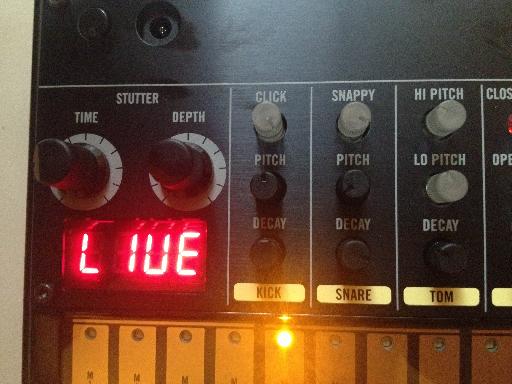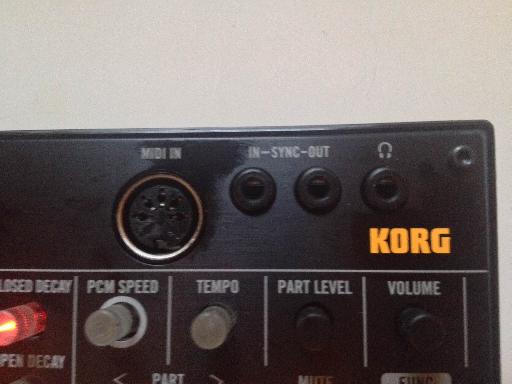While we all have the one friend that has all of the analog gear that we've always wanted, for many of us, it's just been a pipe dream. We get to sit back, and watch those guys on YouTube work that 909, or 808, or some other lovely drum machine. We didn't know about those devices back in the day, and we don't feel like shelling out a couple of thousand for a yesteryear device that may not even hold up through the rigors of shipping.
Again, Korg has stepped up and answered the sad, little cries of those of us who would love a little analog in their life. And, in this review, let's see how they did at making a modern, vintage-esque drum machine for under $200.
Drums
Let's start with the actual analog drums that reside within the Volca Beats, first, as they are a huge part of the draw for this device.
Kick
Of course, the first thing most people want to know about on most drum machines would be the kick. And, in this area, if you're looking for a fat, electronic kick drum with some tweak-ability, look no further. The kick on the Volca Beats is solid, and thick. The click knob at its fullest ads a wonderfully balanced click, that perfectly offsets the low undertone. And, this secondary tone for the kick is huge. Raise the decay and you can get a very nice 808-ish kick drum that will definitely shake a dance floor.
Snare
The snare, in my opinion, just isn't as impressive. It's just a hair too chirpy, and not enough white noise, in my opinion. Though, if you work with it, and spend a little bit of time, you can get something that fills the snares frequency range most adequately.
Toms
The Volca Beats Low and Hi toms have a wonderful sound, and can easily be used for bass parts. Either way you use them, they really lend to that vintage sound, and if you've got a distortion pedal, they can help you tear it up. They get pretty dirty when overdriven.
Hi-hats
Korg pretty much nailed it, in my opinion, on the hi-hats. The open and closed hi-hat both rely on the same Grain knob, which controls the pitch of the hi-hat. Other than that, the open and closed hi-hat have their own individual decays, and sit very well within the overall drum mix.
Speaking of mix, let's talk about something that is missing.
Pan
Unfortunately, the Volca Beats has no current way to pan each of the individual drums. This means you're running a mono drum mix, and that's not incredibly helpful for a mix. You can mute out individual drums, which will help if you're using Volca Beats with a DAW. But, other than that, you're pretty much stuck with everything being right there in the center. Even with this major drawback, the Volca Beats is still impressing me.
PCM Drums
Aside from the analog drums that array Volca Beats, there are also some PCM sampled drums, as well. There is a wonderfully retro clap, that like all the other PCM samples can be pitch controlled with the PCM Speed knob. I was very impressed with the fact that the pitch can be individually adjusted for each PCM sample-based drum. So, if you select Clap, it can be adjusted down. When you select the Crash, it can be pitched up, and it will not affect the pitch of the previously adjusted Clap. This is clever and helpful. And, it's important to note that you can record the knob shifts of this knob in your patterns along with many of the other Knobs on Volca Beats.
Stutter
Like the other Volca devices, the Volca Beats has a very interesting delay that can be used to either stutter the entire drum rhythm, or its speed knob can be turned way down to give you some nice gritty, glitchiness within your drum beats. Like many of the knobs on Volca Beats, the Stutter knobs movements can be recorded. What's also equally helpful is that you can either have Stutter affect the global drum mix, or have it affect individual drum parts. This can be quite nice for shuffling hi-hats when there's no actual Flam on Volca Beats.
The Sequencer
The drum sequencer that is housed within the Volca Beats is simple, but surprisingly powerful, once you start getting to know it. You get 8 storable patterns, with the ability to record in step time and in real time. The step time is a particularly nostalgic experience with the lights of each individual step lighting up in a similar fashion to an old Roland drum machine. Either way you record though, you'll find that the sequencer is very easy to work with and sports some very cool little tricks that make it unique.
For example, when you place the sequencer in Active Step mode, you can select which steps, for the whole drum pattern, are playable. This simple ability makes it possible to do some really cool, on the fly, drum beat creations that don't really fit any old mode. This mode, along with Step Jump, which lets you choose a particular step to start with while the drum part is plain, make it highly possible to do some very cool live drum performances with Volca Beats.
Sync
Like all the other Volca devices, you also get MIDI In, and Control Voltage In and Out for syncing. In addition to sync, you can use the MIDI In as a way of triggering the interior drums from a MIDI controller, or drum pad. I'll admit that the syncing of all the Volca devices I've encountered so far to DAWs has been a little iffy. But, once they are in sync fully, they work quite well. Between themselves, meaning other Volca devices, there is no problem at all.
Conclusion
To be honest, I'm the guy that paid $100 for an individual analog kick drum. So, to get 4 analog drums for $150 is a dream come true. And, when you stack a very cool drum sequencer into the mix, you get a device that you may find yourself using for several different occasions. Again, it's not perfect. Having no internal panning is a drag. But, what you do get more than makes up for what's missing.








 © 2024 Ask.Audio
A NonLinear Educating Company
© 2024 Ask.Audio
A NonLinear Educating Company
Discussion
Want to join the discussion?
Create an account or login to get started!